Mental Illness in Anime and Manga
Mentally-ill and insane characters have a long and storied history in anime and manga. Depending on the situation, mental illness can be used to explain the suffering of a character, or make them seem more scary and frightening. Many depictions of mental illness in media suffer from a lack of realism, and characters whose symptoms are true to life are few and far between. Nevertheless, anime, with its propensity for giving its characters engaging personalities and complex backstories, still has the potential to humanize the mentally-ill and draw attention to their plight.
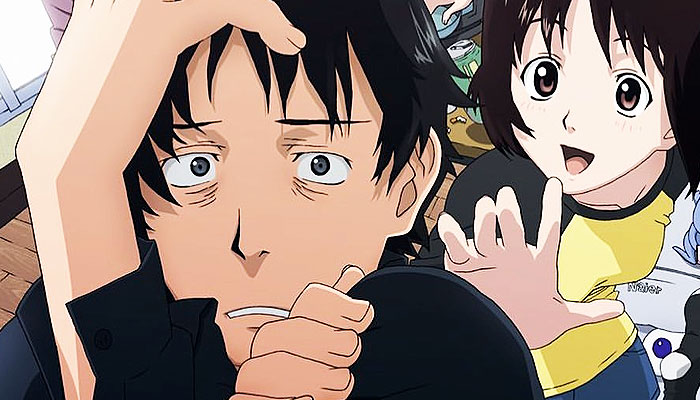
Types of mental illness
Mental illnesses come in many forms; however, in anime and manga, they generally fall into one of four categories: mood disorders, stress-related disorders, psychotic disorders, and personality disorders. Mood disorders involve abnormal or inappropriate moods that a person cannot control, and include major depressive disorder 1 and bipolar disorder 2. Stress-related disorders are either causes of, or caused by, stress and anxiety; often both. Examples of these disorders include obsessive-compulsive disorder 3, post-traumatic stress disorder 4, and dissociative disorder 5. Psychotic disorders are characterized by abnormal behavior, hallucinations, and delusions, which the sufferer does not recognize for what they are. The best-known and most debilitating of these is schizophrenia 6. Personality disorders are more difficult to define, but generally involve some problem in a person’s personality that impacts their ability to go about their daily lives. Borderline personality disorder 7 is among the better-known and studied, but antisocial personality disorder is probably the one most likely to be depicted in fiction.
Stereotypes about mental illness
Many people have stereotypes about the mentally-ill, and creators of anime and manga are no exception. Generally speaking, these stereotypes boil down to three major points 8:
First, fear and exclusion: persons with severe mental illness are to be feared and, therefore, kept out of communities; second, authoritarianism: persons with severe mental illness are irresponsible, so life decisions should be made by others; and third, benevolence: persons with severe mental illness are childlike and need to be cared for.
Any of these stereotypes has the potential to harm people with mental illness by separating them out from other people and preventing them from exercising their own self-determination. At their furthest extreme they may be used to justify violence against the mentally-ill, by presenting the violent behavior as either a reasonable act of self-defense against a “dangerous” person or else an understandable response to someone being a burden.
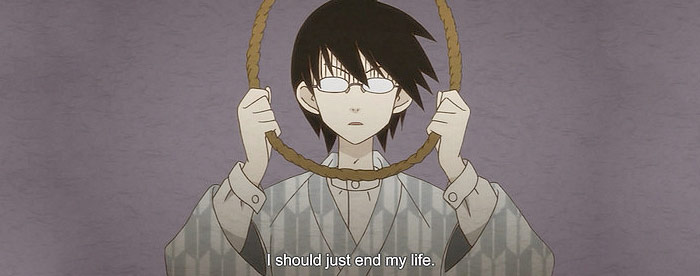
Interestingly enough, anime characters who fit these stereotypes rarely show clear signs of diagnosable mental illnesses, and their problems are just as likely to be due to supernatural elements as anything that could lead to mental illness in real life. The character Mao, from Code Geass, falls into this category. He demonstrates many outrageous, self-absorbed behaviors that cause him to be labeled as “insane” both in the story itself and in the fandom, but the only reason why he acts like that is because his mind-reading powers prevent him from forming normal relationships.
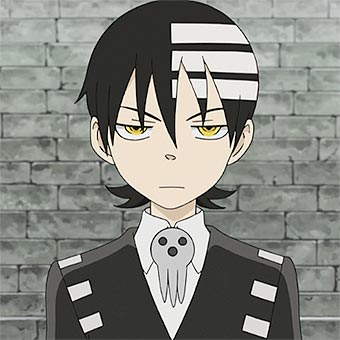
Another problematic way to portray mental illness is to treat it as something humorous, or not that big of a deal. For instance, in Soul Eater, Death the Kid’s obsession with symmetry is depicted as a silly, socially-awkward personality quirk, and the pain and hardship associated with obsessive-compulsive disorder in real life is not taken seriously. Osaka from Azumanga Daioh, meanwhile, demonstrates a number of behaviors associated with attention deficit hyperactivity disorder 9. Again, these behaviors are played for laughs and treated as harmless personality quirks, even though untreated ADHD can be deadly 10.
Despite these problems, anime and manga abound with interesting and thought-provoking characters who happen to be mentally-ill. Mentally-ill characters in anime may be either heroes or villains, and vary greatly in how accurately their mental-health problems are portrayed. Some of these characters end up being among the most engaging and complex in their respective works.
Mentally-ill antagonists
When most people think of mentally-ill antagonists, they assume that the mental illness is the cause of their problems. However, this isn’t necessarily always the case. Anime presents a number of villains who have a mental illness but are not defined by it.
A well-known example of this phenomenon can be seen in Hansel and Gretel, a pair of twin child soldiers from the anime Black Lagoon. These characters have a dissociative identity disorder that causes them to switch identities sometimes. Whether this depiction of dissociation is true to life is unclear, but given the characters’ personal history, that they suffer from dissociation is not much of a surprise. Dissociative disorders are disorders of childhood development that result when very young children experience severe, prolonged abuse and neglect 11, something we know is true of Hansel and Gretel. What’s even more interesting is that, unlike with many mentally-ill villains, the series maintains that there might be some hope for at least one of twins, Gretel. While it’s unlikely she could have lived a normal life, it’s implied she could at least have learned to become more selective and merciful about who she killed and when. The scene that best illustrates this point is one where she taunts Revy, the show’s anti-heroine, by claiming that she and Revy are the same. The implication seems to be that an adult Gretel would be much like Revy herself.
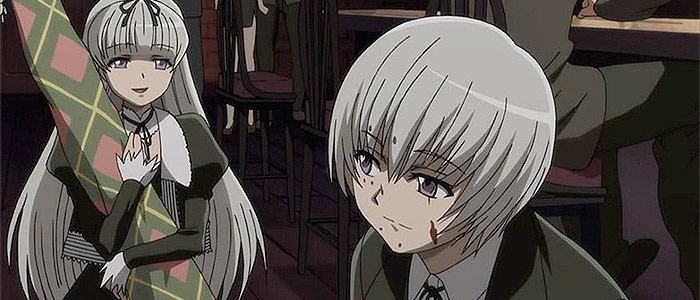
Another anime villain who shows signs of mental illness is Furuichi Teraoka, from the obscure Studio Bones production Xam’d: Lost Memories. At the beginning of the story Furuichi seems to be an ordinary, well-adjusted, caring young man. However, when war breaks out in his homeland and his life and that of his friends grows increasingly complicated and desperate, he sinks into a deep depression and starts attacking the people who care about him. Crucially, the series never seems to imply that his villainy and depression are directly causally related. Instead, the unfortunate circumstances he finds himself in cause him to, simultaneously, become depressed and start doing villainous things. Unusually for an anime series, Xam’d seems to display a fairly sophisticated understanding of what might leave someone vulnerable to mental illness in real life. Furuichi’s father is never mentioned, and while no explanation for his absence is ever given, the implication is that he died or disappeared long ago. Scientists now know that experiencing stress and loss at an early age makes one more vulnerable to developing mental health problems later in life 12.
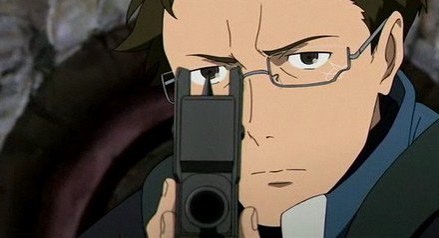
Mentally-ill protagonists
Of course, the preponderance of mentally-ill villains, even well-written, still risks feeding into the stereotype that the mentally-ill are dangerous. Fortunately, some anime and manga depict mentally-ill characters in leading roles, depicting them sympathetically and asking the audience to root for and care about them. In this way, the series provide mental illness with a more human face, and mentally-ill anime fans have more chances to see their specific issues and concerns reflected in media.
Probably the best-known mentally-ill anime protagonist is Shinji Ikari, from Neon Genesis Evangelion. Director Hideaki Anno has suffered from depression for many years, and he wrote Shinji’s character based on his experiences 13. Despite his depression, though, Shinji is still able to pilot a giant robot and fight monsters, and is at the center of most of the conflicts in the story. Shinji’s example shows that mentally-ill anime characters don’t have to be villains or victims.
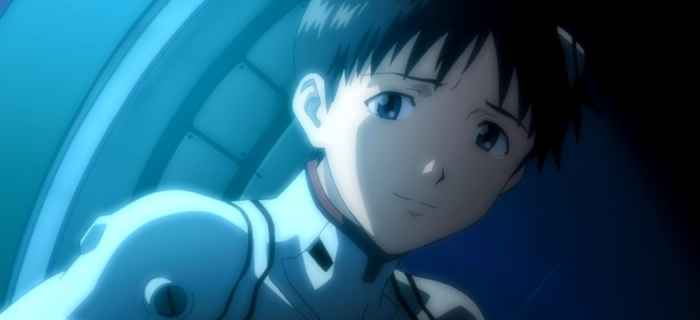
Another surprising place where mental illness arises is in Osamu Tezuka’s Buddha, a manga adaptation of the Buddha’s life and times. In this manga, Siddhartha, the man who ultimately became the Buddha, shows a number of signs associated with depression. When he’s a child other characters comment on how he sleeps all the time, frequently gets sick, and shows little interest in the festivities that his courtiers arrange in his honor. Instead, he spends much of his time pondering death and his fear of it, a fear that haunts him until he reaches enlightenment, and occasionally returns even after. In one particularly suggestive scene, a young noble named Devadatta finds Siddhartha in a cave, claiming that demons are taunting him and telling him to die. All these thoughts and behaviors could be seen as symptoms of depression. Nevertheless, he still founded a religion that has millions of adherents all over the world.
When there’s more than one mentally-ill character
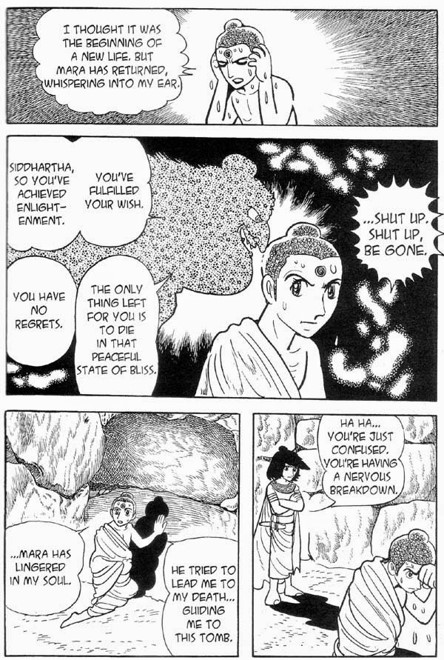
Occasionally, an anime will contain multiple characters who show signs of mental illness, in multiple different roles. One prominent example of this is the horror manga series Deadman Wonderland, which features no fewer than four characters who appear to suffer from particular mental illnesses. Only Shiro, the female lead, has her mental health problems explicitly identified; she suffers from dissociative disorder from years of being tortured in a lab. Other characters who show signs of mental illness are Nagi Kengamine, who has psychosis; Rinichiro Hagire, who has antisocial personality disorder; and Idaki Hitara, who has major depressive disorder. It isn’t spelled out in the series, but most of Nagi’s actions for the earlier part of his character arc are based on a delusion he has. Nagi also dresses strangely, wearing a long-sleeve shirt, jacket, and scarf, even though the prison he’s in is implied to be warm and most of the other characters dress for warm weather. This suggests he has some sort of sensory issues, or possibly a simple lack of concern for social norms, both of which can be seen in psychotic patients.
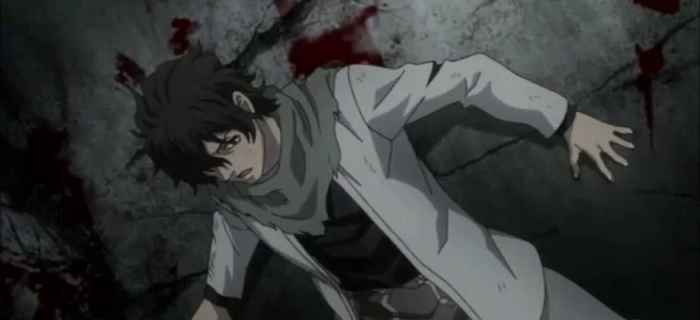
In Hagire’s case, clues to his antisocial personality disorder stem from the fact that he shows no remorse for his misdeeds, as well as his persistent insistence that he doesn’t understand human motivation or emotions, particularly love. Hitara’s depressive symptoms are more subtle, but largely stem from his inability to sleep, a problem he has had for years. He also hallucinates the voice of his daughter, who died many years prior to the series. Psychotic symptoms are rarely associated with depression, with elderly patients at a particularly great risk 14.
A more mundane example of mental illness can be seen in Welcome to the NHK! The protagonist of the series, Tatsuhiro Sato, is a hikikomori 15 who suffers from crippling anxiety. Throughout the series he encounters many other characters who also have psychological problems, including, briefly, another hikikomori that he meets on an online gaming site. When Sato asks him why he spends so much time holed up in his room, supported by his sister, the young man replies: “Because I’m afraid.” This series calls attention to the hurdles facing those with mental health problems in Japanese society–a society that, despite increased awareness, still touts self-reliance and not burdening others with one’s personal problems above all else.
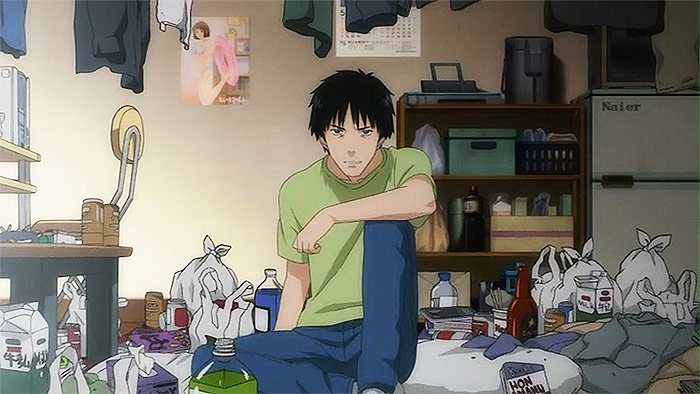
Anime and manga provide a wealth of examples of mentally-ill characters. Some of these characters fall prey to stereotypes, being depicted as violent or irresponsible. However, others do a fantastic job of calling attention to numerous mental-health issues in Japan and the wider world. Thus, anime has the potential to serve as a vehicle for greater understanding and humanization of people with mental illness, often in a particularly fun and engaging way.
Works Cited
- “What is depression?” Mind, March 2019. Retrieved 5 July 2019 from www.mind.org.uk/information-support/types-of-mental-health-problems/depression/#.XR9pNuhKiM9 ↩
- “What is bipolar disorder?” Mind, May 2018. Retrieved 5 July 2019 from www.mind.org.uk/information-support/types-of-mental-health-problems/depression/#.XR9pNuhKiM9 ↩
- “What is OCD?” Mind, May 2019. Retrieved 5 July 2019 from www.mind.org.uk/information-support/types-of-mental-health-problems/obsessive-compulsive-disorder-ocd/#.XR9qL-hKiM8 ↩
- “What is PTSD?” Mind, May 2017. Retrieved 5 July 2019 from www.mind.org.uk/information-support/types-of-mental-health-problems/post-traumatic-stress-disorder-ptsd/#.XR9qj-hKiM8 ↩
- “What is dissociation?” Mind, March 2019. Retrieved 5 July 2019 from www.mind.org.uk/information-support/types-of-mental-health-problems/dissociation-and-dissociative-disorders/#.XR9q4ehKiM8 ↩
- “What is schizophrenia?” Mind, February 2017. Retrieved 5 July 2019 from www.mind.org.uk/information-support/types-of-mental-health-problems/schizophrenia/#.XR9rL-hKiM8 ↩
- “What is BPD?” Mind, January 2018. Retrieved 5 July 2019 from www.mind.org.uk/information-support/types-of-mental-health-problems/borderline-personality-disorder-bpd/#.XR9r4ehKiM8 ↩
- Rüsch, Nicolas, Matthias C. Angerminer, & Patrick W. Corrigan. “Mental illness stigma: Concepts, consequences, and initiatives to reduce stigma.” European Psychiatry, vol. 20, no. 8, 2005, pp. 529-539. Doi: 10.1016/j.eurpsy.2005.04.004 ↩
- Connolly, Maureen. “ADHD in Girls: Why It’s Ignored, Why That’s Dangerous.” ADDitude, 1 July 2019. Retrieved 5 July 2019 from www.additudemag.com/adhd-in-girls-women/ ↩
- Dalsgaard, Soren, Soren Dinesen Otergaard, James F. Leckman, Preben Bo Mortensen, Marianne Giortz Pedersen. “Mortality in children, adolescents, and adults with attention deficit hyperactivity disorder: a nationwide cohort study.” The Lancet, vol. 385, no. 9983, 2015, pp. 2190-2196. Retrieved from www.sciencedirect.com/science/article/pii/S0140673614616846?via%3Dihub ↩
- “What Are Dissociative Disorders?” Reviewed by Wang, P., MD, Dr.PH. American Psychiatric Association, August 2018. Retrieved 5 July 2019 from www.psychiatry.org/patients-families/dissociative-disorders/what-are-dissociative-disorders ↩
- Syed, Shariful A. & Charles B. Nemeroff. “Early Life Stress, Mood, and Anxiety Disorders.” Chronic Stress (Thousand Oaks), February 2017. Retrieved from www.ncbi.nlm.nih.gov/pmc/articles/PMC5482282/ ↩
- Sauder, Mary Lee. “Why Shinji Can’t Just ‘Get in the Robot’: Depression in Neon Genesis Evangelion.” Manga.Tokyo, 2016. Retrieved 7 July 2019 from https://manga.tokyo/otaku-articles/why-shinji-cant-just-get-in-the-robot-depression-in-neon-genesis-evangelion/ ↩
- Targum, Steven D. “Treating Psychotic Symptoms in Elderly Patients.” The Primary Care Companion to the Journal of Clinical Psychiatry, vol. 3, no. 4, 2001. pp. 156-163. Retrieved 16 July 2019 from https://www.ncbi.nlm.nih.gov/pmc/articles/PMC181181/ ↩
- McKirdy, Andrew. “The prison inside: Japan’s hikikomori lack relationships, not physical spaces.” The Japan Times, 1 June 2019. Retrieved 14 July 2019 from https://www.japantimes.co.jp/life/2019/06/01/lifestyle/prison-inside-japans-hikikomori-lack-relationships-not-physical-spaces/#.XSvE0OhKiM8 ↩
What do you think? Leave a comment.


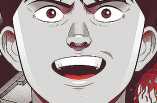
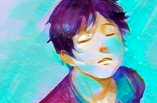
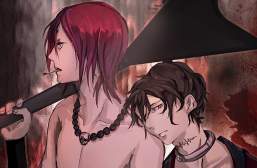
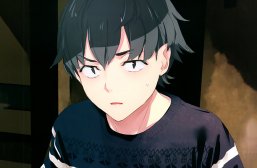

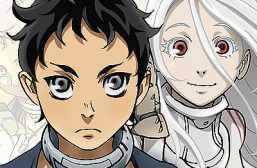
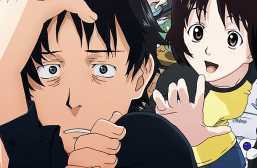
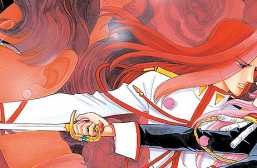

I just want to say I love what you’re doing here. I really enjoyed the well written and thought out stand you took on the portrayal of mental illness in anime.
Not animation, but the character of Sans from the game Undertale is legitimately the thing that got me on the path to seeking help for my mental health issues. I was on Youtube one day and in my recommended videos, there was one about how Sans was an accurate representation of depression. Since I liked the game and the character, I clicked on it. And had several minutes of “haha this is so relatable! *Wait*”
Glad you started seeking help! Sans “helped” me too, I used to have anger issues and when I found undertale I though that sans was a super cool character and I wanted to be chill like him. So I chilled.
I totally thought this was gonna be an article talking about the broad-scale anime fan base. There should be one.
What are some suggestions for anime dealing with mental illness?
Koe no Katachi: basically the entire cast suffers from one mental issue or another, but the main leads Shoko and Shoya suffer from depression and guilt, and it’s handled brilliantly.
Youjo Senki, Tanya is a psychopath.
Tanya is a sociopath. She isn’t insane (at least she wasn’t in her first life). Just extremely bent on being efficient and logical. It’s one of the tells of a socipath when she only sees worth in people based on what she can get from them, she lacks empathy.
Interestingly enough she doesn’t treat her subordinates like shit though, since she finds worth in them being alive. She doesn’t value people aspeople, but she DOES value them… As assets and resources.
Yuri on Ice!!! Severe generalized anxiety with indicators among the cast of mania, depression, and narcissism.
Mahoutsukai no Yome, from the first episode, Chise suffers from depression and sees no worth in her life. We will have to wait to see how bone-daddy Elias helps her through this.
To a lesser degree, Tsuki ga Kirei: Akane has a slight anxiety problem that rears up here and there, but is an underlying part of her character
March Comes In Like A Lion (aka. 3-Gatsu no Lion) is one of the most striking and genuine depictions of what it is like to live with depression, at least, in my opinion.
My lesbian experience with loneliness, by Nagata Kabi. It is a manga where the author tells of her experience with depression and how she began to overcome it.
It is sad but also beautiful, and it is a great help.
A excellent article. I’m pleased to have been able to help in the editorial process, and your works cited section will give me plenty more reading. Thanks.
I’m glad there’s representation, mainly to show people that they aren’t alone, that what they are feeling is something that others experience. Bad representation is obviously, well, bad representation but media is getting better at representation (I feel like I’m saying that word to much *aaAAh*) even if most media sources have a long ways to go.
Representation for the sake of representation is poor writing. It doesn’t tell you about the person’s character. Much less why the audience should care about them. Minority representation is subjecting a character to a premeditated agenda rather than it being genuine story writing.
I love “Welcome To The NHK.” It dives in a lot to the hikikomori lifestyle in Japan and also shows a ton of amazing representation for depression and other illnesses. This and “A Silent Voice” have got to be my top favorites.
I just watched “a silent voice” and I almost cried so many times and I was shaking during most of it.
I never cried during a movie in my life…
Until I watched a silent voice. A silent voice got to me. A lot. I had to literally calm myself down for 10 minutes. I’m not even sensitive to that topic. It’s just because the characters were so well developed that they seemed so real to me. I felt real empathy for these characters. and the thought that this could happen to anyone just stuck with me ever since I watched it.
While watching “A silent Voice” I cried for most of the movie..it truly resonated with me as I am a victim of bullying (not as bad as in the movie but still) the movie was beautiful
A Silent Voice really hit me hard, it’s such a good movie and I feel like lots of people can relate with Ishida.
It’s funny how you mentioned Death the Kid because I love him as a character. *note it’s been years since read the manga but I’ve seen the anime more recently so I’ll take points from that cause I don’t remember a lot of the manga. Also I never read Soul Eater Not. *
I find the over the top symmetry joke cringeworthy at time. Especially at the beginning of the series they took a toll on his character and that’s what he gets remembered as. I don’t see him a just his OCD jokes, I see him as leader in a since. I know Maka and Soul was the main characters so they would use her but I wish the creator spent more time With Kid and the sisters. I saw him as someone that cared deeply of his friends, family, and the citizens that would protect one day, especially the citizens. To go as far as to question his father’s motivations at a time. His OCD did work into his views with his idea of balancing good and I’m pretty sure the manga did more with that but I can’t remember how. He would have issues making decisions in the future but with Liz and Patty by his side to help with it he will a fantastic leader. Idk I guess I read to much into a character that had be sort of shafted by the fans as OCD joke machine for the majority. There’s more to Death the Kid and I just wish it was respected.
There’s the anime movie Aura: Maryuuin Kouga Saigo no Tatakai, which focuses on a certain symptom that’s similar to delusions of grandeur called chuunibyou, and also mental trauma as a result of bullying.
In the manga Goodnight Punpun, just about everyone is.. mentally disturbed.
Would you recommend the manga?
The manga is really great and something special. Inio Asano is really good at writing characters and emotions without relying on traditional tropes.
I believe the depiction of mental illness in anime and manga has raised awareness among its audience. I am interested in psychology topics, particularly mental illness and that allowed me to wholeheartedly enjoy your article. Great topic! well done.
How has no one mentioned the Monogatari series in this comment thread?
That is literally a show with a cast of characters that all have some underlying issue or illness that directly affects them and the show is about people learning to live with them and grow. The main character Araragi shows plenty of signs of depression, lack of self worth, anxiety, and maybe also ADD. Hanekawa deals with identity issues and deep seeded anxiety along with a lot of issues stemming from family problems. Senjougahara dealt with PTSD and social anxiety along with a plethora of issues surrounding abandonment and lack of mother figure. Sengoku has anxiety and identity issues, etc. The list goes on and on. I mean the whole show is pretty much people with issues having them personified in some form of aberration or entity.
This article is what made me fulfilled. I was diagnosed with depression when I was 13, and living with it as an adult has been really hard. Seeing depression represented in media in a positive light, while also showing the dark moments has helped a bit. I don’t feel so ashamed or alone. Thank you for this piece.
The mental representation in recent cartoons is amazing. I’m glad that we’ve come so far. ❤️
A lot of the characters in The Fruit of Grisaia have some notable mental issues, but sadly the anime doesn’t dig very deep into that part as much as the visual novel did.
Great article. I might pen in a manga suggestion: Oyasumi Punpun. It’s one hell of a ride from start to finish. I binged the entire thing in two days and it is HEAVY.
Just the following, but very important details about “Neon Genesis Evangelion”: Ikari Shinji’s mental issues were much more complex than just “Depression” (which in itself is already pretty complex!), and the EVAs were not “robots” but actually Cyborgs. By the way, I am a Nuclear Cardiologist, and every Detail is a pressing issue.
It is quite nice having good representation, I myself have social anxiety, depression, and OCD, I also think I am on some part of the spectrum in Autism due to me being quite literal a lot and sometimes accidentally making a joke that might actually harm a friend and I not realize it until they react to it(though I haven’t been tested for it yet so as of now it’s a possibility) and many kids my age and younger (I’m 16 so yeah) like to make jokes all the time, sometimes it’s a good joke and it is funny but it does get annoying at times since it’s quite constant and many seem so apathetic towards the subjects at matter.
It irritates me when someone so blatantly doesn’t give a shit about those they’re joking about or is obviously not educated enough on that. I’ve noticed that most kids at my school who are gender dysphoric don’t seem to be welcomed and are often out casted by the other students, I remember one student rudely stating out loud, “You’re not a boy.” Obviously pointing fun at the kid during 9th. I used to be bullied by the way I dressed and acted, I honestly think kids thought I was trans and since we were in 6th and 7th grade at that time so I know most kids didn’t know much, I honestly don’t think I heard of the word transgender until around 7-8th grade.
Basically I was a Tom boy and I really dressed like a boy mostly and acted somewhat like one (I still do lol), but I in no way had gender dysphoria, I was a girl and I didn’t feel any disconnection to my gender. I don’t really like to make fun of people who suffer with stuff like this cause I know that it’s a terrible thing to deal with and with some of these disorders and illnesses, I’ll never truly know the extent of how it feels to have them.
Hopefully someday we’ll all learn to except each other as who we are. And who we are. Are not perfect.
I mean, autism does go deeper than just taking things literally, as someone with Asperger’s myself. One such example is really, really particular eating patterns. I only eat certain types of food for weeks on end, get tired of it, then have to find a new food for the next month or so.
While technically not an anime but legend of korra book 4 tackles PTSDs and depicts Korra’s mental state almost masterfully. Definitely one of the best i have seen in any anime/cartoon.
A note on self-diagnosis things…
While I get the frustration with people who romanticize mental illness and disorders, just remember that professional diagnoses have problems as well. For example, boys are more likely to be diagnosed with autism than girls. And of course there’s being unable to get a diagnosis; a friend of mine who suffers from seasonal depression was never taken to a medical professional because her parents were convinced that she was “just being over dramatic.” She had to look up the symptoms online to figure out what was going on.
I’m surprised nobody has brought up Deku from my hero Academia. Seeing his childhood, how he obsess with his passions and how he thinks constantly like talking to himself out loud. I feel like Deku is autistic.
I had so much anxiety last year that I tried to hang myself. I’m so glad I called a suicide hotline and was put in a mental health facility. I finally got the right medication and begun a diagnosis process. Thank you for covering this topic.
The article is really nice.
A complex topic and really interesting discussion. I’m not entirely sure about the argument you are presenting as fundamentally as soon as supernatural elements are an aspect of reality in fictional texts, although experiences could align to real world ailments they lose the relevance of that comparison. I think it is a tricky area to discuss and that you did it in a respectful manner.
This is a fascinating piece. I remember at Uni once writing a piece about mental illness in Disney animations. The difference is quite striking. Anime seems to allow space for a realist and even valuable exploration of mental illness. Disney however uses it as a comic foil. Buzz light Years dissociative identity disorder in Toy Story opens him for nothing but ridicule and pity. Dory has some serious short term memory problems in finding Nemo and gosh aren’t they funny? Well, I guess that one plays on the myth of fish memory, and it seems vaguely prudish to pick on cartoons having fun, so we just go on laughing at the silly mentally ill people… Rex the dinosaur and his debilitating anxiety… There are many more in the family friendly Disney universe, and we haven’t even started laughing at Donald ducks speech impediment
This is well written. I agree fully. There are many times where the creators of anime will take serious issues and turn them into comedic relief. This isnt just with mental health though….. Im inspired.
Very relatable. By taking a closer look at each character in various anime/manga, we show empathy in what they go through as people, and thus can make a connection to our own lives.
I recently finished watching the 1998 anime series Serial Experiments Lain, and was reminded of my love for the weirdness of anime. While its lackluster production value and often convoluted plot prevent it from being a masterpiece, its deep exploration of identity, technology and transhumanism make it exceedingly unique among its science fiction peers.
While the plot doesn’t deal overtly in themes of mental illness, Lain, the protagonist, exhibits a form of dissociative identity disorder that is intrinsic to the show’s transhumanist elements, (which I won’t elaborate on, so as to avoid spoilers). While it’s doubtful this was the creator’s main intent, sometimes just seeing characters navigate through trials of a psychological nature can be reassuring for those viewers who struggle with mental illness on a daily basis.
When anime depicts real world issues against the backdrop of such weird and beautiful settings and characters, I’m reminded of why I enjoy it so much, and of why it remains a culturally relevant art form today.
Very well-written and thoughtful! I’ve had similar ruminations while watching anime or reading manga. Or even playing Japanese games, like Danganronpa.
I love how you went in depth with your analysis of the character’s various mental illnesses. The specificity here is great!
I’ve always had a soft side for some villains. A lot of the time they suffered trauma as a kid that resulted into a dangerous life of crime. This is not me taking sides with villains, it’s just that I connect on a personally with those (even if it’s fiction) who didn’t have a easy childhood.
To be honest, I had never imagined that anime was so freaking deep!! I had always thought that it was this cartoony thing that only the kids were crazy about. I must say, you have completely changed my mind.
What I really like about this article is that there are details you may overlook, like Nagi Kengamine’s daily life, what he’s wearing, etc, but they informs so much more about the character’s psyche than meets the eye!
yes…yes…YES!!!!!!!!!!! Thank you for this brilliantly-written and informative article. Not only did you incorporate multiple examples in anime which makes your point easier to understand, but did you give history behind each mental illness mentioned. Thank you!!!
In response to your content, I think there is a bit of timeline inspecting of Japan that we definitely should take into consideration. Unfortunately, mental illness is an extremely looked down upon concept in Japan. Most, if not all, people with mental illness in Japan are connected to a plethora of negative connotation. Because of this, people that suffer from mental illness are painted in the worst ways possible — one of these ways being in one of the most culturally recognized forms of media: anime. Anime serves as one of Japan’s main creative outlets, so what people see in society are what they will talk about in their artwork.
I think that some incorporation of mental illness is meant to be ironic, but I also think a lot of it is a projection of Japan’s bias against mental illnesses.
The article is really thought-provoking.
Its amazing how the anime can represent the mental illness, in such a subtle way, this reinforces the idea that it is very necessary to elaborate this type of analysis linked to the social sciences in anime works.
mental ill people in anime is super common
I think this is an interesting article with a wide range of examples, but the paragraph on Evangelion could have been expanded a lot, given the fact mental illness and trauma is one of the main themes of the series! Also, the trauma and consequent maladaptations which characterise important figures like Asuka and Misato deserve a mention!
Glad you mentioned the hikkimori in this article.
I love to read manga. This manga is really amazing as it is described in details like about every character, means there daily life is discussed in it very nicely.
I haven’t watch most of this animes but I agree about the stereotype representation of mental disorders for characters. Some did some justice with it tho. Nice article by the way!